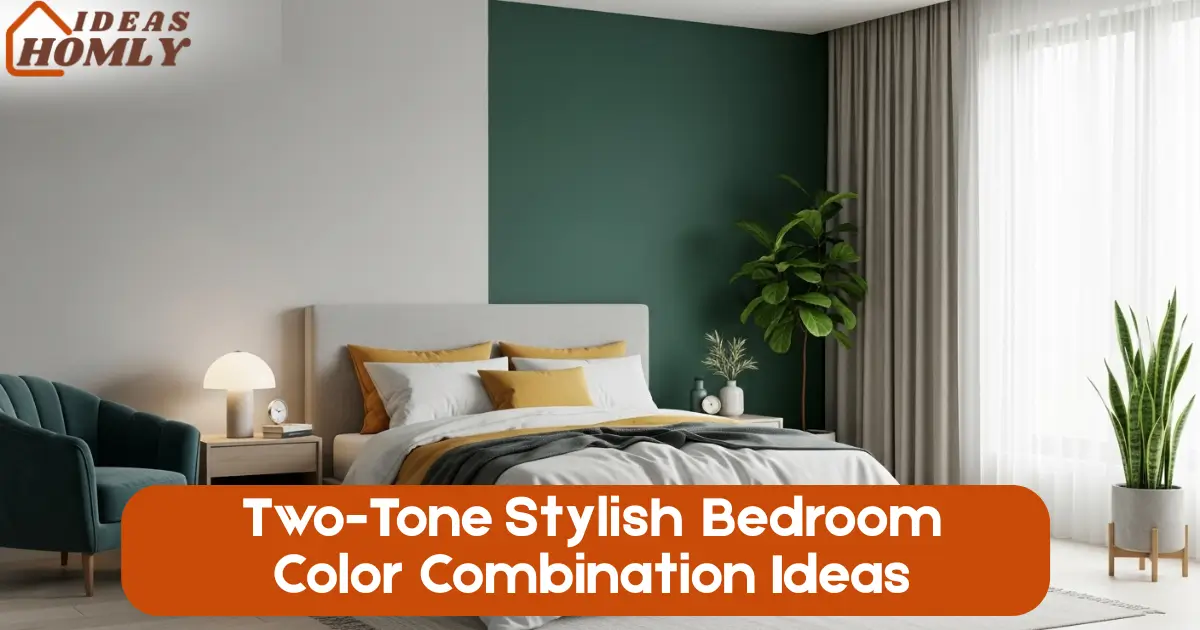Ever walked into a room and felt instantly relaxed or weirdly uncomfortable without even knowing why? That’s the power of color. And in bedrooms, where we recharge after long days (and scroll way too much on Pinterest at 2 AM), the color combo you pick really matters.
I’ve been obsessed with cozy, well-balanced bedroom aesthetics for years, and one trick that never fails me is the two-tone color strategy. It’s stylish, budget-friendly, and a lot easier to pull off than repainting your entire room five different times. (Been there. Not proud.)
Let me share some of my favorite bedroom color combinations that look polished but still feel personal. These are not just paint picks; they’re mood-makers.
Why Color Pairing Isn’t Just About Looks
Here’s something I learned the hard way: It’s not just about which colors look good together. It’s about how they feel together.
Color pairing influences:
- The room’s temperature (cool vs. warm vibes)
- How big or small the space feels
- Your actual mood (yep, color psychology is real)
And when done right, two-tone combos give your room depth, contrast, and that “I hired a designer” look—without needing to actually hire one.
Now let’s get into my go-to bedroom combos that are always Pinterest-worthy and nap-approved.
1. Blush Pink + Chocolate Brown
Soft meets bold, and it’s a vibe.
This combo is like a chocolate-covered strawberry sweet, rich, and totally irresistible. Blush pink adds a light, romantic feel without being too girly, while chocolate brown grounds the space with warmth and sophistication.
What I love about this duo is how it creates balance. The blush keeps things airy and soft, while the brown adds depth and coziness. It’s great for both small and large bedrooms because it never feels overwhelming.
Use blush pink on walls or bedding, and bring in brown through furniture, rugs, or a statement wall. Wood finishes, especially walnut or dark oak, look stunning with this palette. Add a textured blanket or throw pillows to tie it all together.
For me, this combo works especially well in a room where you want to feel calm but not boring. I used it in a guest room once, and now everyone fights to sleep there.
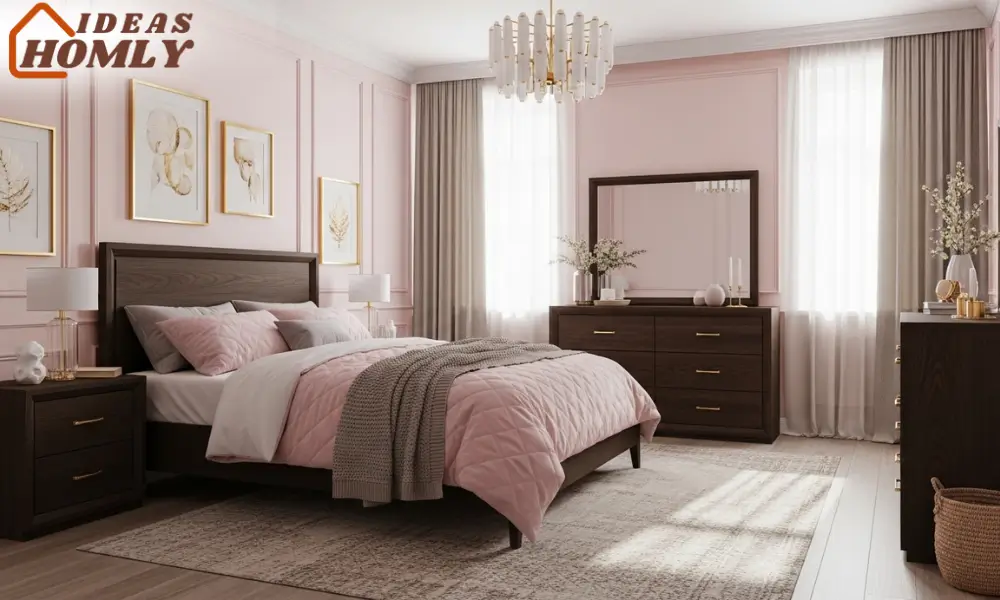
2. Black + Natural Wood
Minimal but not boring.
If you’re into clean, Scandinavian, or modern vibes, this is your color power couple. Black adds drama and definition, while natural wood tones (like birch or oak) keep things grounded and warm. It’s like pairing espresso with oat milk smooth, bold, and totally aesthetic.
I personally love using black on the bed frame, light fixtures, or a matte wall section behind the headboard. Then bring in wood with flooring, floating shelves, or a mid-century-style dresser.
What’s magical about this pair is its versatility. You can go rustic, Japandi, minimalist, or even industrial. And unlike full black rooms (which can feel like a bat cave), the wood softens it just enough.
This one’s a lifesaver if you want a room that feels modern but still livable. It’s surprisingly easy to maintain, black hides scuff marks like a champ.
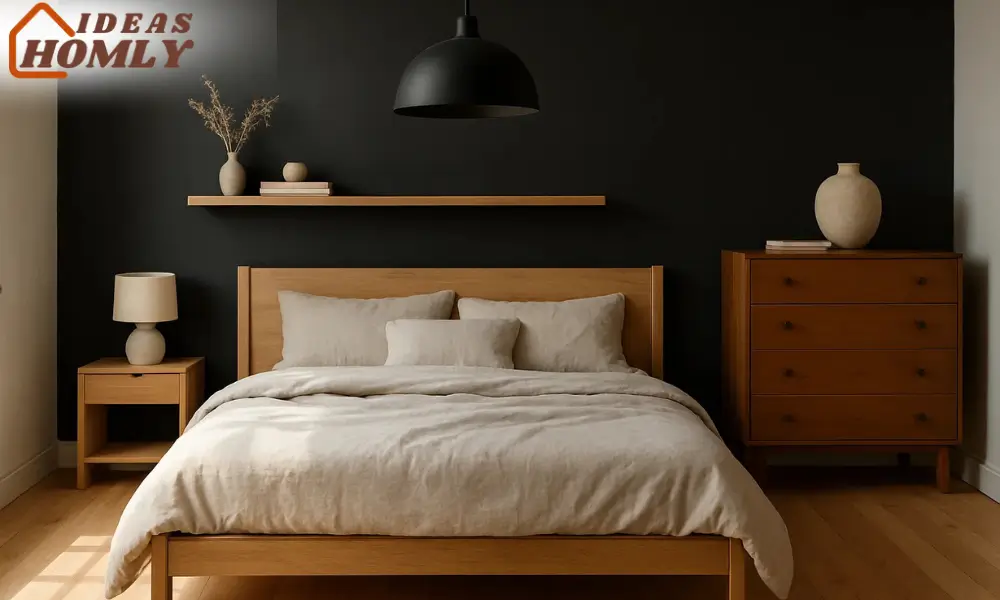
3. White + Navy
Timeless and crisp.
Let’s just say it, this combo is basically the blue jeans and white tee of bedroom design. It always works. White opens up your space, makes it feel bright and fresh. Navy adds just enough contrast to make things interesting without overpowering.
I’ve used this combo in both tiny apartments and larger master bedrooms. It never fails. Try painting the walls white, then layer in navy curtains, pillows, or even a navy headboard. Or flip it, navy walls with white trim look super high-end, especially with gold or brass accents.
This combo gives your bedroom a hotel-like calmness but with your own personality woven in. And hey, it’s pretty much gender-neutral, so no one’s arguing over “too pink” or “too cold.”
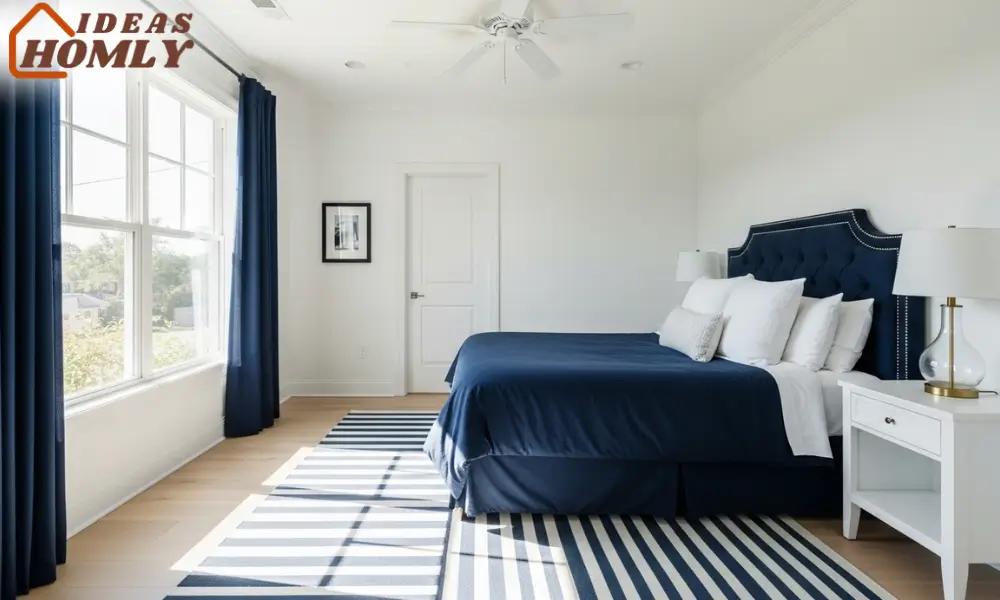
4. Olive Green + Terracotta
Earthy, cozy, and packed with personality.
There’s something incredibly grounding about this combo. Olive green brings a sense of nature indoors. It’s muted, calm, and easy on the eyes. Terracotta, on the other hand, adds warmth and just the right amount of rustic charm.
I once used this pair in a small bedroom with a lot of natural light, and honestly, it felt like sleeping in a Mediterranean villa. Olive on the walls adds depth without darkening the room too much. Then use terracotta in accents like throw pillows, planters, or even a warm-toned rug to keep it cozy.
What makes this combo a winner is how flexible it is. Add rattan lamps, ceramic vases, or linen curtains and suddenly your room has that effortlessly curated, Instagram-friendly look.
If you’re tired of the typical whites and greys, this combo will give your room a grounded, stylish feel without trying too hard.
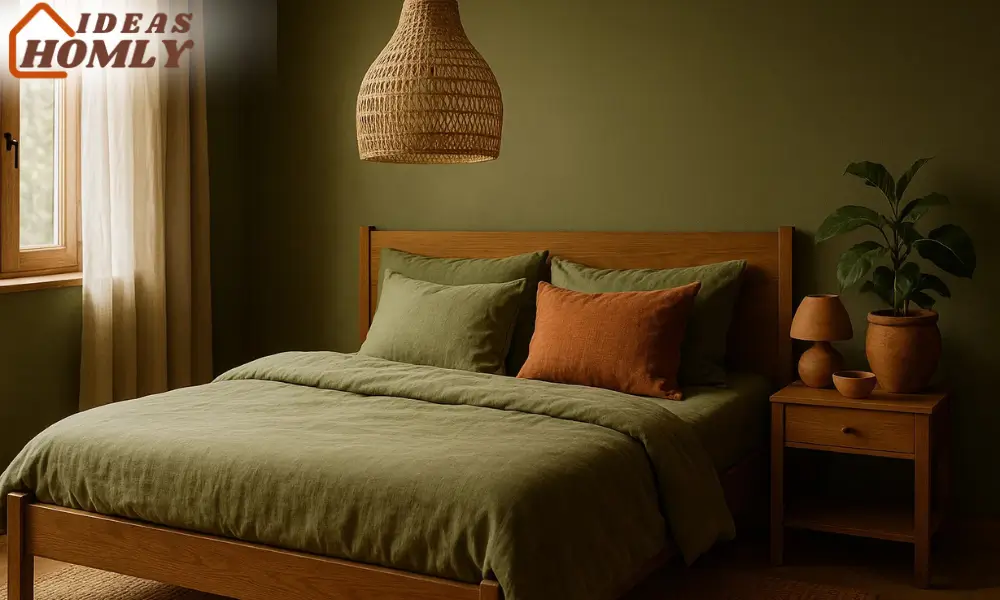
5. Charcoal + Mustard Yellow
Bold and full of character.
I’ll admit, this one sounds risky. But when done right? It’s a showstopper. Charcoal creates a moody, modern vibe. It’s dramatic without being as harsh as black. And mustard yellow brings in that punch of color that lifts the whole look.
I used this combo in my brother’s room, he’s not exactly the “decorative pillows” type and even he said it felt like something out of a design magazine. We went with charcoal walls and mustard bed linens and art pieces. Added a tan leather chair, and bam, instant cool.
This combo is especially great if you love bold design but don’t want your room screaming in neon. The yellow softens the dark tones, and together, they make a room feel mature, creative, and lived-in.
Mustard hides stains better than white, just saying.
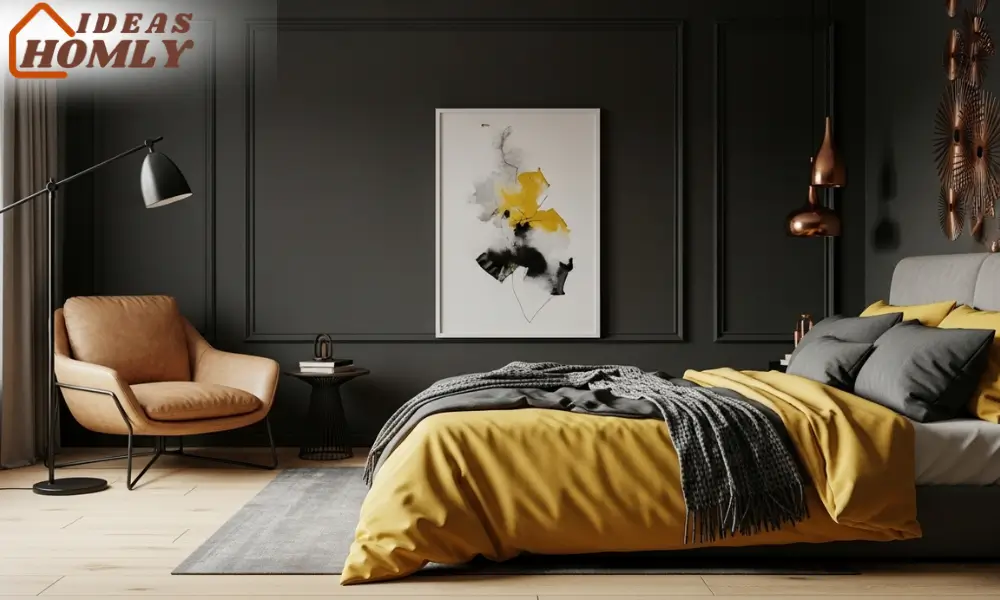
6. Dusty Rose + Sage Green
Soft, serene, and a little bit dreamy.
This combo is what I’d call “gentle luxury.” Dusty rose isn’t too pink, and sage green has that muted, calming quality we all crave after a long day. Together, they create a peaceful retreat with a touch of elegance.
I used this combo in a nursery turned guest room and ended up loving it so much, I replicated the palette in my own bedroom. It’s especially good for creating a spa-like feeling without using cliché seafoam and seashells.
Try sage green walls or curtains, and go for dusty rose in the bedding or lampshades. Throw in some brass finishes or whitewashed wood, and the look becomes soft and balanced.
What I personally love is that this combo feels both modern and timeless. It works with floral prints, solid linens, even a bit of vintage decor without looking outdated.
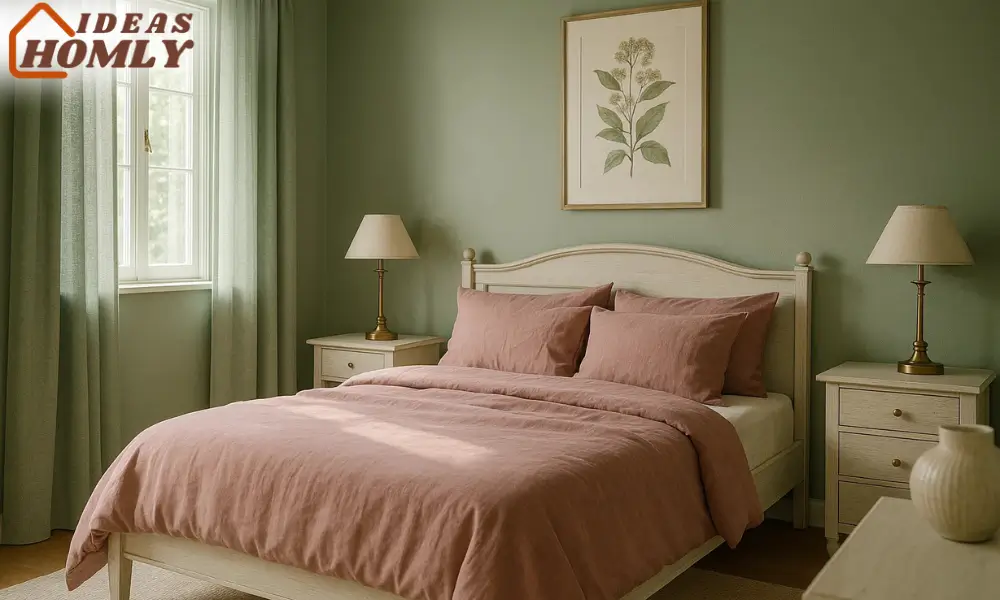
Where to Use Each Color (Without Overdoing It)
It’s easy to fall in love with a color combo, but the trick is knowing where to use each color for maximum effect. Here’s how I usually break it down:
| Color Combo | Wall Color | Accent Elements | Furniture | Extras |
|---|---|---|---|---|
| Blush Pink + Chocolate Brown | Blush on walls, brown on furniture | Rugs, pillows | Dark wood beds, dressers | Textured blankets, gold accents |
| Black + Natural Wood | One black accent wall | Lighting, frames | Light wood bed & shelves | Linen bedding, metal fixtures |
| White + Navy | White walls, navy details | Curtains, bedding | White nightstands, navy chair | Gold hardware, striped rug |
| Olive Green + Terracotta | Olive on wall or trim | Cushions, art | Wooden or terracotta-toned items | Natural fibers, plants |
| Charcoal + Mustard Yellow | Charcoal wall or panel | Mustard pillows or lamps | Grey furniture | Leather, metallic accents |
| Dusty Rose + Sage Green | Sage wall, rose decor | Throws, linens | White or soft beige furniture | Botanical prints, soft lighting |
Tip from me: Stick to a 60-30-10 rule.
Use your dominant color (like sage or navy) for 60% of the room, the secondary color for 30%, and the last 10% for accents. Keeps things visually balanced and avoids chaos.
Conclusion
If you’re anything like me, choosing bedroom colors can quickly turn into a Pinterest rabbit hole. But trust me, going the two-tone route is one of the smartest ways to bring style, personality, and a sense of calm to your space without spending months second-guessing your choices.
Whether you’re all about moody drama with charcoal and mustard, or soft serenity with dusty rose and sage, each color combo I shared brings something totally unique to the room. And the best part? You don’t have to be a design expert to pull it off.
Use the table above as your cheat sheet. Think about the feeling you want your room to give off, then use these color pairs to make it happen. A little paint, a few well-placed textiles, and suddenly your bedroom looks like it belongs in a magazine spread.
So, if you’re ready to make your bedroom look better than ever (and actually feel like you), go ahead pick your favorite combo and start small. Sometimes all it takes is a paintbrush and a little vision.
Your walls deserve better than boring beige.
FAQs
Absolutely, you can! The key is balance. For example, charcoal and deep green can work beautifully when paired with plenty of natural light, light-toned accents, and mirrors to reflect brightness.
Stick to a clean layout and avoid clutter so the space doesn’t feel boxed in. Use lighter decor elements to keep it from becoming cave-like.
This is one of those “learned it the hard way” things for me. Don’t skip the sample swatches. Paint a small section of the wall with both colors side-by-side and look at them in morning, afternoon, and evening light.
Also, tape fabric swatches or place cushions/furniture in front of that section to see how they all work together. Lighting can completely change the tone of a color.
If your room is on the smaller side, stick to combos like white and navy or dusty rose and sage green. These shades open up the space and add personality without overwhelming it.
Keep the dominant color on the walls and use the bolder one for textiles and accents. Soft, muted tones generally make small rooms feel more spacious and airy.
Think of the 60-30-10 rule. Use the primary color for walls or large furniture (60%), the secondary for bedding or curtains (30%), and the third for tiny pops like lamps, vases, or throw pillows (10%).
This keeps the design consistent without feeling forced. Also, feature walls are a great way to add contrast without repainting the whole room.

